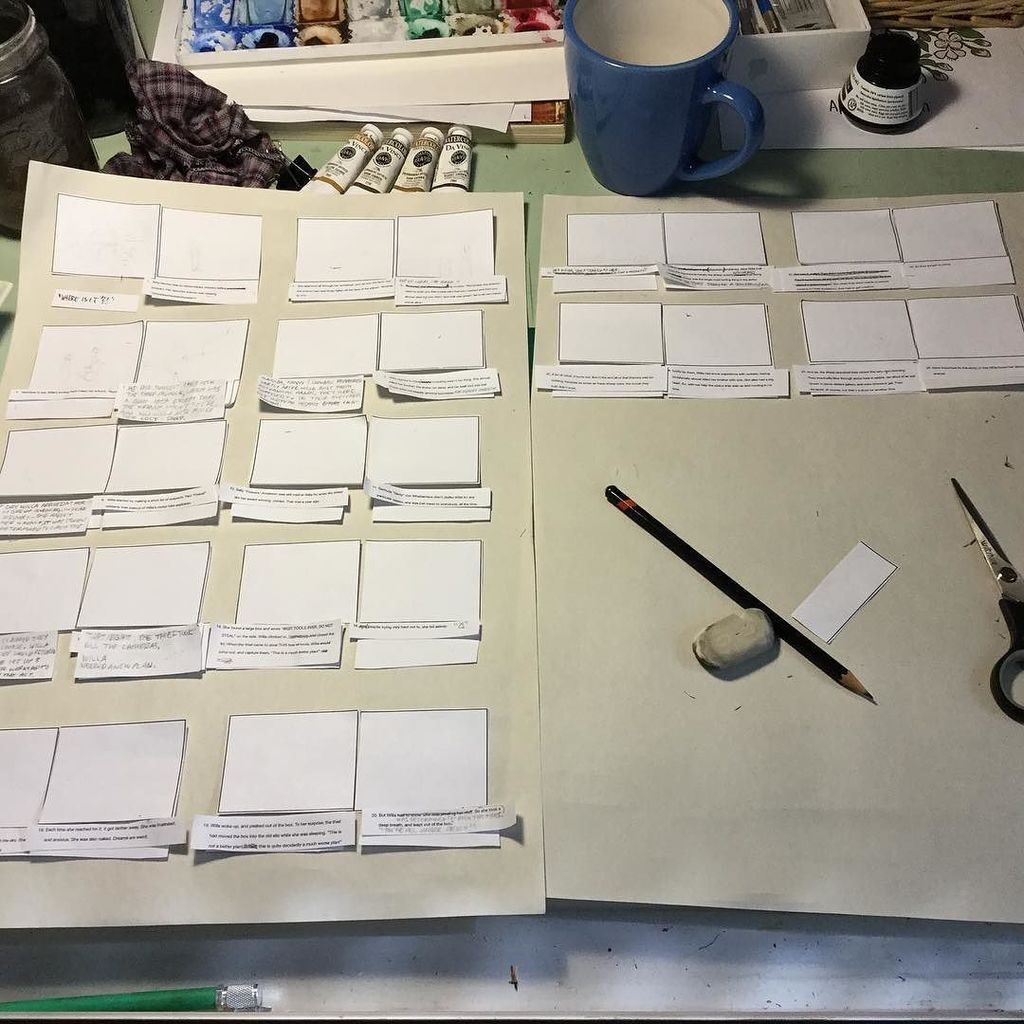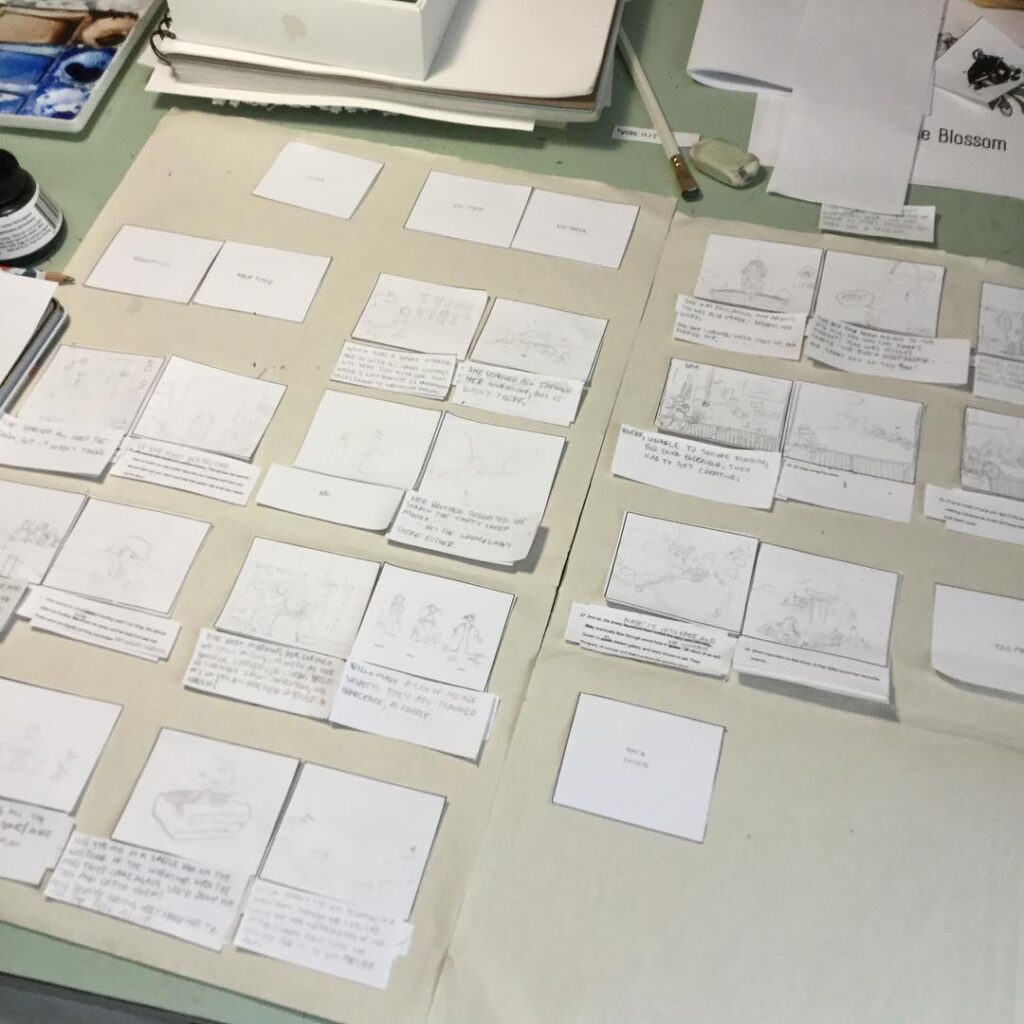Storyboarding for picture books and cats
May 5, 2017 | Blog

Last week I wrote about my experiences writing a picture book. Perhaps you read it. Perhaps you stumbled here by accident. Perhaps you just wanted directions to highway 401, in which case follow County Road 64 straight through Brighton about 10 minutes. You can’t miss it.
More on point – once I got to a place in writing the story where I was nitpicking word choices, I needed to view the story from a different angle.
Enter the storyboard.
You’ve probably heard of storyboards used in movie production. They’re also a useful and common tool for planning all manner of books, not just picture books. They’re even a useful tool for understanding user flow when designing software. Basically, any project that requires a broad visual overview of a sequence of events could benefit from storyboarding.
Sideline. There is a lot more user experience design in a picture book than I had previously given any thought to. It’s more than just text and pictures – it’s very much about crafting an experience for the reader. I will bring up ux design a lot probably, since it’s the majority of my design experience. Get used to it.
So I made certain assumptions while writing Wrenched. I assumed the flow of the story, and how visuals would correspond with the text across many pages. Two pages of text in a word processor looks and reads very differently when it’s spread over 24 pages in a picture book. A storyboard would help me see and feel what that flow looks like.
I tried different formats for my storyboard – panels in my sketch book, printed panels on standard printer paper in a variety of sizes. I kept running into problems. It was too cramped, or it was spread over two many pages, preventing a satisfying overview.
This was the storyboard I ended up:

Right? What a hot mess. If I had poster board, or a pin board I would have used it instead. The kid’s newsprint craft paper was free, and unused, so that was a thrifty bonus. I printed out panels for the thumbnails, at the ratio I had decided to use for the book pages. I taped the panels to the newsprint, in a way that showed facing pages. I included cover and end papers to be thorough.
I drew thumbnails into each panel, and wrote the page text beneath. This allowed me to experience the visual and textual flow from page to page through the book. And so with this bird’s eye view I was able to edit both visuals and text until I felt the movement of the story was appealing.
These are my main thoughts on this process:
- I did more text editing on the storyboard than I expected. Complete pages of text got reworked or dropped, or consolidated with other pages. Text I thought was great was completely rewritten.
- I wonder if I could write a book completely in a storyboard? The tactile quality of the process is more appealing than a word processor. That’s likely madness.
- It’s a very effective (and cheap) way to view the visual flow of the picture book before investing in serious artwork.
- Panel to page is more of a one-to-one relationship with a picture book storyboard than other creative endeavours. In this regard I wonder if it’s considered more granular. None of this is important.
- Individual panels and strips of paper for text made moving pages around, or replacing content very easy.
- It’s a wonderful mess.
- The cat liked to nap on it, which I decided was a good omen. I don’t believe in omens, but believing in them was easier than moving her all the time.
So, the storyboard was super easy, and extremely useful. My biggest mistake with the storyboard, much like in the writing stage previously, was getting caught up in the process, and forgetting that the storyboard is another step in refining the story. It’s not the end of it. It’s a kind of transitional planning tool. To that end, I may have spent too long editing in the storyboard. That’s also a plague of personal projects – the lack of a serious third party deadline makes for some very elastic time management.
Eventually I got to a point where I was happy with the storyboard. The text was good, the thumbnails and compositional flow was good. Minor issues still existed, along with the usual creative doubt. I decided to let my brain percolate on possible solutions while I fleshed out the artwork.
Besides, the cat had taken complete ownership of the storyboard, and I wasn’t allowed near it any more.
Next week I’ll talk about planning the pictures.
You can follow the progress of Wrenched on the project page, and any of my social media accounts.
